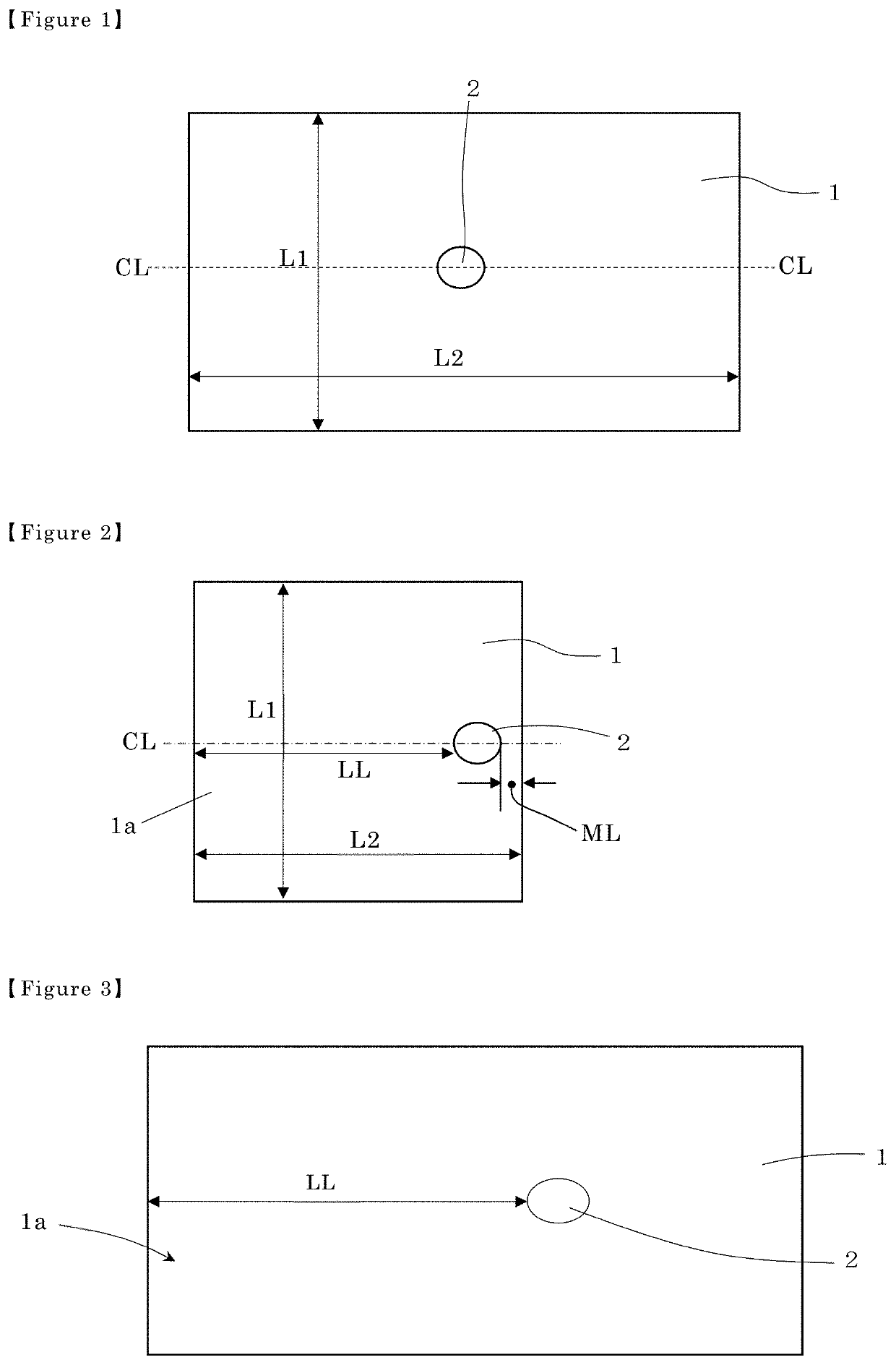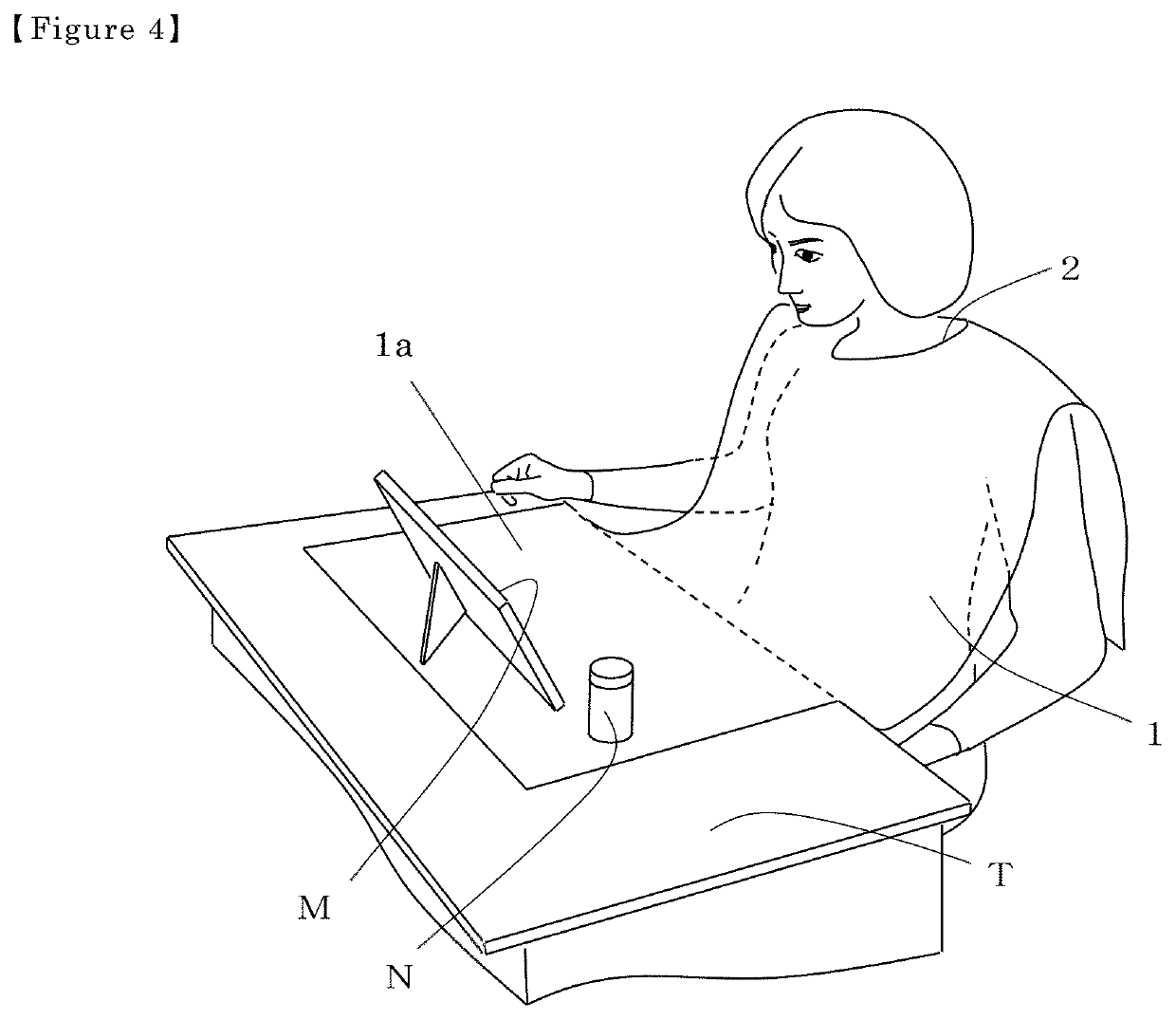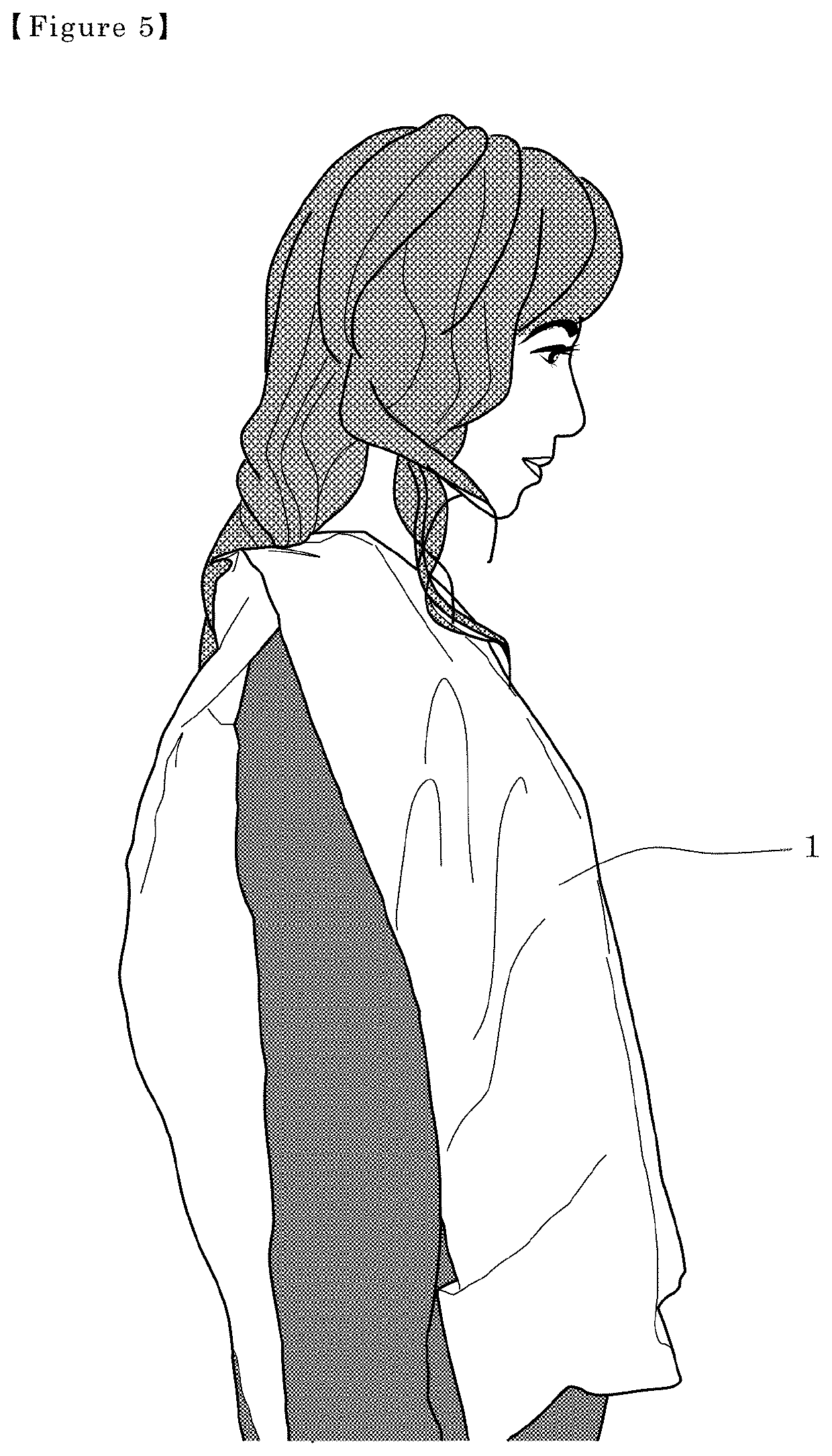However, when individuals dye their hair at home, haircaps and film wraps are rarely used.
Therefore, since general hair medicants applied to the hair dry out, and sufficient heat retention and
moisture do not occur, in the case of hair-
coloring agents, chemical changes may be inconsistent, resulting in uneven dying or uneven color.
Further, when applying a hair-coloring agent, to prevent it from adhering to clothing, users typically wear a dedicated cape, however, even in this case, the hair to which the hair medicant had been applied is exposed, so there is a risk that the hair medicant may
stain clothes or the surrounding area.
In cases that the user is uncomfortable with the risk, the hair-coloring agent is used in the bathroom, but if it adheres to the body, it may
stain the
skin for several days, and what is more, if it adheres to the
bathtub, walls, or the like, there are problems that the stain is unremovable.
Against this background, the following technical report will disclose various hair caps that have been invented, but they are not yet established for
home use, beauty salons, or the like, and almost none have been put to practical use.
On the one hand, when beauty salons or barber shops use hair caps, because one that contains elastic is widely stretched to cover the hair to which a general hair medicant has been applied, the hair dresser's task is made more difficult.
In particular, if a hair dye adheres to the periphery of the hair cap, it may come into contact with the customer's
skin, so in order to avoid the periphery of the cap from touching the hair, the elastic of the cap must be stretched by hand as widely as possible, which is extremely difficult for one person to do, and sometimes help from others is necessary.
Moreover, because the hair cap is put on the head from above, when putting it on, it is difficult to put all the hair inside the hair cap, and often after the cap is put on the head, hair that must be put inside the cap protrudes from the edge of the cap, and this causes annoyance.
Further, when removing a used covered hair cap, due to the expansion and contraction of the elastic cord, the general hair medicant adhering to the hair cap may splash and scatter, and may adhere to the customer's facial area or clothes.
In addition, the elastic cord that closes the gathers of the hair cap bites into the skin, making the customer feel uncomfortable and left with marks.
However, in this case as well, the following kinds of problems have been pointed out.
As for film wrap, by using the
adhesive force of the film wrap itself, the film wrap, which wrapping around the head prevents a general hair medicant from
drying, performs poorly at heat insulation.
So, when exposed to cool or warm breezes from indoor heating or air-
conditioning equipment, the tightly adhering parts may be partially cooled or warmed, and the effectiveness of the general hair medicant can become inconsistent.
Further, since film wrap is self-
adhesive, when film wrap is pulled and
cut from a film roll, unless the four corners of the film wrap are held, it folds up on itself and becomes unusable.
Because of this, when wrapping the head with stretched film wrap, if hair is draping down from the hairline, it is not possible for one person to wrap the hair and also gather up the draping hair, thus, requiring help from others.
However, the film wrap can lose its self-
adhesive force and become loose when water or liquid arising from a
chemical reaction of the general hair medicant penetrates the tight seam.
As a result, because of the weight of the medicant the film wrap can slip off the head.
At this time also, the film wrap may lose its self-adhesive strength and fall off the head.
If this happens unexpectedly, the general hair medicant may accidentally splash and scatter onto the customer and the surroundings.
 Login to View More
Login to View More  Login to View More
Login to View More 


